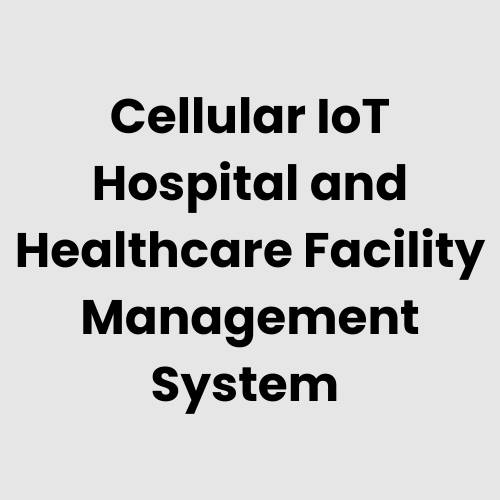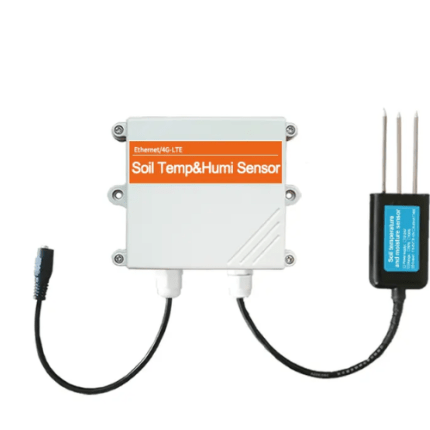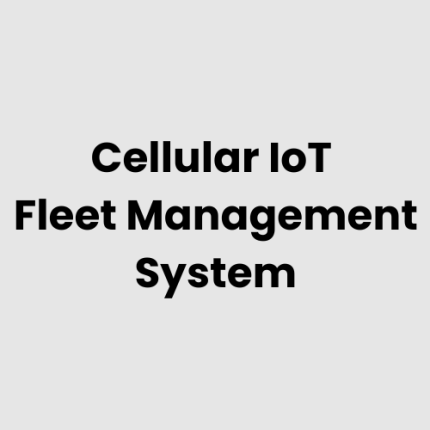Description
Technical Architecture of Cellular IoT Enabled Hospital and Healthcare Facility Management System
The Cellular IoT Enabled Hospital and Healthcare Facility Management System integrates advanced cellular IoT technologies to provide real-time monitoring, control, and optimization of healthcare facility operations. It features a distributed architecture that connects IoT sensors, devices, and communication gateways to a central management system. The architecture ensures seamless integration with existing healthcare infrastructure while providing enhanced monitoring, automation, and analytics.
At its core, the system uses cellular networks for reliable, long-range communication and data transmission. IoT devices are deployed throughout the healthcare facility, collecting data on everything from equipment usage to environmental conditions. This data is then sent to the cloud for processing and analytics, enabling real-time decision-making, alerts, and optimized resource management.
Hardware of Cellular IoT Enabled Hospital and Healthcare Facility Management System
- IoT Sensors: Temperature, humidity, pressure, and motion sensors for monitoring healthcare environment conditions.
- Wearable Devices: Smart wearables for patient monitoring, including heart rate, blood pressure, and oxygen levels.
- RFID Systems: RFID tags and readers for tracking medical equipment, staff, and patients.
- Cellular Gateways: Gateways enabling seamless communication between IoT devices and cellular networks.
- Cloud Server: A secure server for storing and processing collected data, accessible remotely by authorized users.
- Edge Computing Devices: Devices that process data locally to reduce latency and ensure quick responses for critical healthcare applications.
- Network Infrastructure: Reliable networking hardware (routers, switches, etc.) to ensure connectivity across the healthcare facility.
Physical Placement Considerations for Hardware
- IoT Sensors: Strategically placed in critical areas such as patient rooms, operating theaters, storage rooms for medical equipment, and common areas to monitor environmental parameters.
- Wearable Devices: Worn by healthcare staff and patients for continuous health monitoring. These should be lightweight and comfortable to ensure patient compliance.
- RFID Readers: Placed near key points of interest, such as entrances, exits, and storage areas, for tracking medical assets, patient movements, and staff.
- Cellular Gateways: Installed in locations with strong cellular network coverage to ensure uninterrupted communication between devices and the cloud platform.
- Edge Devices: Positioned near IoT devices to handle local data processing and reduce the reliance on centralized cloud servers for time-sensitive actions.
Hardware Architecture of Cellular IoT Enabled Hospital and Healthcare Facility Management System
The hardware architecture comprises a network of interconnected IoT devices, cellular gateways, and edge computing units, all supporting the cloud infrastructure. Data flows from IoT sensors and wearable devices through local gateways and edge devices, where it is either processed locally for real-time responses or transmitted to the cloud for long-term analysis. The system’s hardware is designed for scalability, ensuring it can adapt to the growing needs of healthcare facilities. With high-level security measures in place, each component is built to meet the rigorous demands of healthcare environments.
Deployment Considerations of Cellular IoT Enabled Hospital and Healthcare Facility Management System
When deploying the Cellular IoT Enabled Hospital and Healthcare Facility Management System, it is essential to:
- Assess Network Coverage: Ensure that the healthcare facility has robust cellular network coverage, especially for remote areas.
- Integration with Existing Infrastructure: The system must be compatible with the hospital’s current IT and medical infrastructure, such as Electronic Health Record (EHR) systems and existing hospital management software.
- Data Security: Implement strong security protocols, including encryption, access control, and authentication, to protect sensitive healthcare data.
- Scalability: Plan for future expansions, ensuring that the system can accommodate additional devices and sensors as the healthcare facility grows.
- Compliance: Ensure that the system complies with industry-specific regulations and standards, such as HIPAA (Health Insurance Portability and Accountability Act) in the U.S.
List of Relevant Industry Standards and Regulations
- HIPAA (Health Insurance Portability and Accountability Act)
- ISO 9001 (Quality Management Systems)
- ISO 27001 (Information Security Management)
- ISO/IEC 27018 (Protection of Personal Data)
- IEC 60601-1 (Medical Electrical Equipment)
- CE Marking for Medical Devices (European Compliance)
- FDA 21 CFR Part 820 (Quality System Regulation)
- IOT Security Foundation Standards
- NIST Cybersecurity Framework
Local Server Version of Cellular IoT Enabled Hospital and Healthcare Facility Management System
The Local Server Version of the Cellular IoT Enabled Hospital and Healthcare Facility Management System allows for on-premise management of data, which is critical in environments where cloud connectivity might be limited or when regulations demand local data storage. This version ensures that healthcare facilities can maintain control over their data and keep it securely within their local infrastructure. The local server manages the collection, storage, and analysis of IoT data, and facilitates the communication between devices and the healthcare system’s internal networks.
Cloud Integration and Data Management
Cloud integration for the Cellular IoT Enabled Hospital and Healthcare Facility Management System allows healthcare facilities to leverage powerful cloud platforms for real-time data processing, analytics, and reporting. The cloud-based architecture enables remote access to healthcare data, providing hospital administrators, doctors, and authorized personnel with up-to-date insights on facility operations and patient health metrics.
Data management involves securely transmitting data from IoT devices to the cloud for processing. The cloud platform handles large datasets, ensuring that healthcare professionals can access meaningful information without overloading local servers. Additionally, cloud storage ensures data redundancy, backup, and disaster recovery, while also supporting advanced analytics and AI algorithms for predictive maintenance, patient care improvements, and operational efficiencies.
At GAO Tek, we provide end-to-end solutions, including cloud integration and data management, to optimize healthcare facility operations with our innovative IoT-enabled systems.
GAO Case Studies of Cellular IoT Enabled Hospital and Healthcare Facility Management
- New York City, New York
A leading hospital network implemented a Cellular IoT solution to track critical medical equipment and patient locations. The system, which integrates RFID and real-time monitoring, helped streamline hospital operations, reduce patient wait times, and improve equipment utilization. This advanced management system has become a cornerstone of efficient patient care and resource management in the city’s healthcare facilities. - Los Angeles, California
A prominent healthcare provider in Los Angeles deployed a Cellular IoT system for temperature and humidity monitoring across various departments. The system significantly enhanced the facility’s ability to comply with stringent healthcare regulations and ensure optimal conditions for patient care, particularly in sterile environments, where maintaining a precise climate is critical for both safety and operational efficiency. - Chicago, Illinois
A hospital in Chicago integrated a Cellular IoT platform to remotely monitor patient vitals and other health parameters in real-time. This technology has enabled healthcare providers to proactively intervene in patient care, reduce response times, and support better management of critical conditions. The system was also essential in reducing unnecessary hospital visits, contributing to patient convenience. - Houston, Texas
A large healthcare facility in Houston employed Cellular IoT for environmental monitoring and predictive maintenance of medical equipment. The system utilized IoT sensors to continuously assess equipment status, preventing costly downtimes and enhancing the overall quality of healthcare services. This initiative improved hospital staff efficiency and extended the lifespan of essential medical tools. - San Francisco, California
A well-known San Francisco hospital implemented a comprehensive Cellular IoT-enabled system for managing patient mobility within the facility. By using IoT tracking devices, the hospital enhanced its ability to track patient locations and ensure their safety. This innovation has streamlined patient flow, enabling quicker service delivery and reducing waiting periods. - Miami, Florida
In Miami, a regional healthcare provider used Cellular IoT to monitor critical conditions such as oxygen levels and blood pressure remotely. By leveraging cloud integration, the system allowed for real-time monitoring, enabling healthcare providers to deliver more personalized and timely interventions. This system reduced hospital readmission rates and improved patient outcomes. - Seattle, Washington
A healthcare organization in Seattle implemented Cellular IoT technology for smart lighting and energy management. This initiative not only optimized energy use across the facility but also enhanced patient comfort with adjustable lighting solutions. The system’s energy efficiency features resulted in significant cost savings while maintaining a conducive environment for patient recovery. - Washington, D.C.
A prominent hospital in Washington, D.C. deployed an advanced Cellular IoT solution for real-time tracking of both medical equipment and healthcare staff. By integrating RFID tags and real-time location systems (RTLS), the hospital improved asset utilization, reduced inventory errors, and enabled better staff coordination across its sprawling campus. - Boston, Massachusetts
A major Boston-based healthcare provider adopted Cellular IoT for infection control and environmental monitoring. With continuous temperature and humidity data collection from patient rooms and operating theaters, the system improved the hospital’s infection control protocols and compliance with health standards, ensuring optimal conditions for patient recovery. - Phoenix, Arizona
Phoenix hospitals turned to Cellular IoT technology to enhance patient engagement and health tracking. By using connected devices to monitor patient data, healthcare providers were able to offer real-time feedback to patients, improving communication and treatment outcomes. The system allowed for effective remote care and streamlined interactions between patients and healthcare professionals. - Dallas, Texas
A Dallas medical center integrated a Cellular IoT-based solution for its critical medical equipment management system. The IoT-enabled system tracked the status and location of assets, ensuring high availability of essential equipment like ventilators and IV pumps. The system helped improve overall operational efficiency and reduce delays in patient care. - Atlanta, Georgia
In Atlanta, GAO Tek’s Cellular IoT solutions were implemented in a large hospital network to enable predictive maintenance for critical healthcare equipment. Sensors connected to medical devices helped detect faults before they caused downtime, ensuring that life-saving equipment remained operational and reducing maintenance costs over time. - Minneapolis, Minnesota
A Minneapolis hospital utilized a Cellular IoT platform to enhance its disaster preparedness and response system. The system integrated real-time data from IoT-enabled environmental sensors and wearable devices to quickly assess risks and manage emergency situations more effectively. The system’s real-time capabilities provided immediate insights for better resource allocation during crises. - Denver, Colorado
A major hospital network in Denver turned to Cellular IoT technology for patient tracking and improving facility security. IoT-enabled wearables allowed hospital staff to monitor patient conditions continuously, while integrated access control systems enhanced safety across the hospital’s various departments, preventing unauthorized access to sensitive areas. - Vancouver, Canada
A healthcare facility in Vancouver adopted a Cellular IoT solution to automate patient flow and bed management. By using IoT sensors and devices, the facility optimized room allocation and reduced wait times for patients. The real-time data processing allowed hospital administrators to make quick adjustments, improving patient care and hospital throughput. - Toronto, Canada
In Toronto, a healthcare provider implemented Cellular IoT technology for remote patient monitoring and diagnostics. The system collected health metrics such as heart rate and blood pressure through connected devices, allowing doctors to remotely assess patient conditions and provide timely interventions, resulting in reduced hospital admissions and better overall healthcare management.
GAO Tek Inc. remains at the forefront of integrating cutting-edge Cellular IoT solutions into healthcare systems, offering innovative technologies that improve operational efficiency, patient care, and facility management. With a robust R&D background and a reputation for excellence, GAO Tek continues to support healthcare providers in the U.S. and Canada, driving industry innovation and enhancing healthcare delivery systems globally. Explore our solutions and see how we can assist your healthcare facility.
Navigation Menu for Cellular IoT
- Cellular IoT Accessories
- Cellular IoT Devices
- Cellular IoT – Cloud, Server, PC & Mobile Systems
- Cellular IoT Resources
Navigation Menu for IoT
- LORAWAN
- Wi-Fi HaLow
- Z-WAVE
- BLE & RFID
- NB-IOT
- CELLULAR IOT
- GPS IOT
- IOT SENSORS
- EDGE COMPUTING
- IOT SYSTEMS
Our products are in stock and can be shipped anywhere in the continental U.S. or Canada from our local warehouse. For any further information, please fill out this form or email us.
We are looking for partners. For more information on partnering with GAO, please visit Partner with GAO Tek Inc. It lists various ways to partner with GAO, such as OEM Partnerships, Technology Integration, Distribution and Reselling Opportunities, Presenting at the Leading Event Tek Summit, Joint R&D Projects, Training and Consulting Services, Industry-Specific Collaborations, Research and Academic Partnerships.



